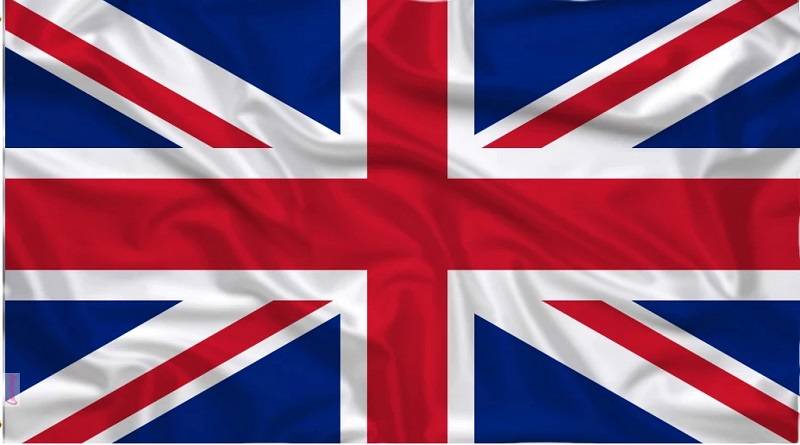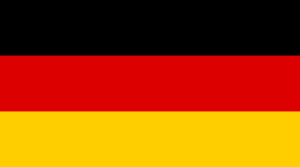INTRODUCTION/GREETING PATTERNS
Let’s Start (page:1)
A) Hello = Hi (=very informal)
Hello. I’m Burhan. Hi. I’m Bahri. Hello. My name is Belma. Hi. My name is Betül.
B) Good Morning Good Afternoon Good Evening Good Night
Note: “Good Night” is used only when leaving people, not when meeting them.
Reading & Speaking (page:1)
– What is your name? -What is your name?
– My name is Ayşe. -I’m Ayşe.
BANU: Hi. I’m Banu. What is your name?
BRIAN: Hello. My name’s Brian. Nice to meet you=Glad to meet you=Pleased to meet you.
BANU: Nice to meet you
BRIAN: Nice to meet you too.
When leaving people:
FORMAL: Good morning/Good Afternoon/Good evening/Good Night
LESS FORMAL: Goodbye
INFORMAL: bye/see you/see you later/see you tomorrow/see you next week…etc
Cheers (BR. Only)/cheerio/Take care
Speaking & Listening (page:2)
Introductions:
FORMAL: FATMA: Helen. This is my friend Erman.
HELEN: How do you do?
ERMAN: How do you do?
INFORMAL: FATMA: Helen. This is my friend Erman.
HELEN: Hello. (=hi)
ERMAN: Hello. (=hi)
Dialogue: Diana: Excuse me! Are you Leyla.
Leyla: Yes, I am. What’s your name?
Diana: My name’s Diana.
Leyla: Oh. Nice to meet you
Diana: Nice to meet you too.
Asking about health:
How are you? How are you? How are you?
Fine, thank you. Fine, thanks. Very well. Thank you. (Formal)
INFORMAL :
How are things? How’s things? How’s it going? How are you doing/going(USA)
Great Not too bad OK/All right so-so /(it)could be worse
Reading/Speaking (page:3)
Where are you from? Where are you from? What nationality are you? What nationality is Bill Clinton?
I’m from Turkey. I’m from İzmir. I’m Turkish. He is American.
Are you English? Is he from İzmir? Where is she from?
Yes, I am. No, he isn’t. He is from Urfa. She is from Tokat.
No, I am not. I am Turkish.
THANK YOU:
Formal: Thank you very much / Thank you very much indeed /
Informal: Thanks / Thanks a lot / Ta (very informal)
REPLIES TO THANKS:
A: Thanks A: Thank you very much for tea. A: Thank you. A: Thanks a lot.
B: That’s Ok(all right) B: Not at all (formal) B: You are welcome. B: Don’t mention it.
NOTE: Especially British People do not usually answer when they are thanked for small things.
CLASSROOM ENGLISH
Instructions:
Listen
Repeat after me
Come here
Open your books/notebooks
Close your books/notebooks
Copy this into your notebooks
Learn this by heart
Do your homework
Look
Fill in the blanks
Read the text silently
Work in pairs
Ask a question
Answer the question
Look at the board
Don’t read
Read a lot
Practice a lot
Revise your notes
Discipline:
Be quiet, please
Speak English
Stand up
Sit down
Put your fingers up
Put your fingers down
No talking
Sit back
Close the window
Don’t run in the class
Don’t miss classes
Don’t be late for school
Feedback and encouragement:
Good.
Very good
Excellent
Well done
Thank you
You are welcome
Try again
THE PRESENT TENSE OF THE VERB ‘’TO BE’’
AFFIRMATIVE STATEMENTS (Singular) AFFIRMATIVE STATEMENTS (Plural)
SUBJECT BE SUJECT BE
I am a teacher in Istanbul happy sad We You They are cowboys. angry. in Texas.
You are
He
She is
It is an ashtray
NEGATIVE STATEMENTS (Singular) NEGATIVE STATEMENTS (Plural)
SUBJECT BE+NOT SUBJECT BE+NOT
I am not a singer in London old upset We You They are not workers. happy. in Mexico.
You are not
He
She is not
It is not an ashtray
CONTRACTIONS (affirmative) CONTRACTIONS (Negative)
I am I’m I am not ————— (I’m not)
You are You’re You are not You aren’t (You’re not)
He is He’s He is not He isn’t (He’s not)
She is She’s She is not She isn’t (She’s not)
It is It’s It is not It isn’t (It’s not)
We are We’re We are not We aren’t (We’re not)
You are You’re You are not You aren’t (you’re not)
They are They’re They are not They aren’t (They’re not)
YES/NO QUESTIONS (Singular) YES/NO QUESTIONS (Plural)
BE SUBJECT BE SUBJECT
AM I from Italy? Are we you they from Italy
Are you
Is he she it
SHORT ANSWERS (Singular) SHORT ANSWERS (Plural)
POSITIVE POSITIVE
I am are is Yes , we you they are
Yes , you
He she it
SHORT ANSWERS (Singular) SHORT ANSWERS (Plural)
NEGATIVE NEGATIVE
No , I’m not ( I am not ) you’re not (you aren’t) he’s not ( he isn’t ) she’s not ( she isn’t ) it’s not (it’s not) No , we’re not(we aren’t) you’re not(you aren’t) they’re not(they aren’t)
USAGE:
1. The Present Tense of “be” has three forms: am, is, are . It is used with nouns and pronouns. SINGULAR PLURAL SUBJECT + AM/IS/ARE + NOUN SUBJECT + ARE + NOUN I am a teacher We are teachers You are a student You are students He is an electrician They are electricians She is a ballet dancer It is a pen Explanations : a) Before singular nouns , we use a ( if the noun begins with a consonant sound ) or an ( if the noun begins with a vowel sound ) She is a housewife It is an apple I am a teacher He is an engineer b) A noun , a name or a subject pronoun can be the subject of the sentence . İzmir is a city We are students Hürriyet is a newspaper Orhan is an artist Singular subject pronouns : I – YOU – HE – SHE – IT Plural Subject Pronouns : WE – YOU – THEY HE WE I + AM SHE + IS YOU + ARE IT THEY Singular Nouns : Ali , Ayşe , Mr. Green , Miss. Kaplan , a tree , a computer Plural nouns : Ali and Ahmet , trees , cars , computers c) We use “is” with singular nouns and the singular subject pronouns he , she and it The tulip is a flower Mr. Peynirci is an art director Miss Çağla is an accountant He is a carpet seller She is a model Hülya Avşar is a singer d) We use “are” with plural nouns , plural subject pronouns , and the second person singular subject pronoun YOU. Ali and Veli are friends . We are computer engineers You are teachers You are a mother e) We use “am” with the pronoun “ I” . I am a worker . I am not an engineer . f) We may also use contractions with BE esp. when speaking . I am = I’m = I’m a dentist You are = You’re = You’re an engineer He is = He’s = He’s a graphic designer She is = She’s = She’s a singer It is = It’s = It’s a book
We are = We’re = We’re teachers You are = You’re = You’re cousins They are = They’re = They’re architects 2. The verb “be” can be used with an adjective. e.g.: I am happy You are sad He is tired She is lazy The movie is boring We are hardworking You are naughty They are hungry . a) We use adjectives to describe nouns such as objects , animals , plants , places and people . İzmir is beautiful You are helpful The dog is dangerous b) Adjectives do not have plural forms . The books are heavy . ( NOT heavies ) The girls are beautiful . ( NOT beautifuls ) c) We may use a , an before an adjective only if it is followed by a noun . She is hardworking …………… She is a hardworking student It is boring ……………………….. It is a boring programme . 3. We may use prepositions with TO BE . I am in the living room He is at the door You are in the garden She is at home He is at the door It is on the chair You are between Hasan and Brian They are behind the car . We may use be + preposition to talk about place or location . Prepositions answer the question where . Where is the pen ? Where are the boys ? It is on the table . They are in the garden . 4. To make negative sentences with BE we use SUBJECT + BE + NOT … I am not a doctor = I’m not a doctor You are not in the garden = You aren’t in the garden He is not happy = He isn’t happy She is not a musician = She isn’t a musician It is not a pencil . = It isn’t a pencil We are not sad = We aren’t sad
They are not partners . = They aren’t partners Explanations : Negative contractions with BE can be formed in two ways : You aren’t a teacher OR you’re not a teacher Ali isn’t in the class OR Ali’s not in the class They aren’t here OR They’re not here . Note : There is only one form of negative contraction for AM + NOT I am not lazy = I’m not lazy ( NOT I amn’t lazy ) 5. YES-NO QUESTIONS : The questions that can be answered by Yes or No are called Yes-No Questions . We form YES-NO questions by changing the word order . First we put the auxiliary verb (am,is,are) before the subject . YES-NO QUESTIONS ( Positive ) Am I early ? Yes , you are / Yes , you are early No , you aren’t / No , you aren’t early Are you from İzmir ? Yes , I am / Yes , I am from İzmir. No, I am not / No , I am not from İzmir . Is she at home ? Yes , she is / Yes , she is at home . No, she isn’t / No , she isn’t at home . Is he a doctor ? Yes , he is / Yes , he is a doctor . No , he isn’t / No , he isn’t a doctor . Is this a pen ? Yes , it is . / Yes , it is a pen . No , it isn’t / No , it isn’t a pen . Are we late ? Yes , we/you are / Yes , we/you are late . No , we/you aren’t / No , we/you aren’t late . Are they in the class ? Yes , they are / Yes , they are in the class . No , they aren’t / No , they aren’t in the class . YES-NO QUESTIONS ( Negative ) Am I not your sister ? Yes , you are / Yes , you are my sister . No , I am not / No , I am not your sister . Aren’t you a student ? Yes , I am / Yes , I am a student . No , I am not / No , I am not a student Isn’t Ayşe in the garden ? Yes , she is / Yes , she is in the garden No, she isn’t / No , she isn’t in the garden . Isn’t Ali at home ? Yes , he is / Yes , he is at home No, he isn’t / No , he isn’t at home . Isn’t it happy ? Yes, it is / Yes , it is happy No, it ,isn’t / No, it isn’t happy Aren’t we in the dining room ? Yes,we/you are / Yes , we/you are in the dining room No , we/you aren’t / No, we/you aren’t in the dining room Aren’t they expensive ? Yes , they are / Yes , they are expensive No, they aren’t / No , they aren’t expensive
a) We form negative questions wit TO BE in two different ways : Is she not angry ? OR Isn’t she angry ? b) If a Yes-No Question has a negative answer , we should add the correct answer since the person who asks the question expects it . Are you a doctor ? Is Aisha late ? No , I am not . I am a teacher . No , she isn’t . She is early . Isn’t Ali at home ? Are the books on the table ? No , he isn’t . He is at school . No , they aren’t . They are on the chair . c) “Aren’t I” is also used but it isn’t common . Am I not your sister ? OR Aren’t I your sister ? 6. Information Questions : They are also called wh-questions . Sometimes we cannot have enough information from the answers to YES-NO Questions . So, when we want to have more information we use wh-questions . Some of these question words are WHO , WHOSE , WHERE , WHICH , WHAT , WHEN , WHY , HOW …… etc Questions with WHAT What is your name ? What are they ? What is this ? Burhan Peynirci Pens a book My name’s Burhan Peynirci They’re pens It’s a book What color is your jacket ? What color are your eyes ? What are those ? Black Brown Pictures It is black They’re brown They are pictures QUESTIONS WITH WHO Who is this girl ? Who are they ? Who is he ? My girl friend School boys Burhan’s son She is my girl friend They are school boys . He is Burhan’s son Ps. When who and what are used to ask for the subject, they most often have singular verbs, even if the question expects a plural meaning. However, when they are used to ask for the complement of a clause, they can have plural verbs. Who are your closest friends? My closest friends are Funda and Fatma. What are your political views? Sorry. I am a civil servant. QUESTIONS WITH HOW How are you ? How old are you ? How old is he ? How is the weather ? Fine 15 7 Sunny I am fine I’m 15 He is 7 It’s sunny
QUESTIONS WITH WHERE Where is the bird ? Where are the children ? Where is he from ? Where are u from ? On the bush In the garden Diyarbakır Muş It is on the bush They’re in the garden He is from Diyarbakır I’m from Muş QUESTIONS WITH WHICH A: Which is Ahmet’s pen ? Which book is yours ? B: The blue pen is Ahmet’s The story book (= The blue one ) (= The story book is mine ) 7. CHOICE QUESTIONS WITH OR: Choice questions are the questions in which we make a preference. First , we use the auxiliary verb ( am,is,are) before the given item . Then we put OR and give another item to make the choice . We cannot simply say YES or NO as an answer if we use or . Are you a teacher or a student ? Am I fat or slim ? Is it a pen or a pencil ? A teacher slim a pen I am a teacher . You’re slim . It is a pen . Are they flats or houses ? Is Ayşe happy or sad ? Is he Ali or Mehmet ? Flats Sad Ali . They are flats . She is sad . He is Ali . 8. Ain’t is not used in standard English , but it is a very common word in dialects and uneducated forms of British and American English . It is used as a contracted form of am not , is not , have not and has not . Don’t talk to me like that. You ain’t my boss. I ain’t a doctor. I am an artist.



Average Rating